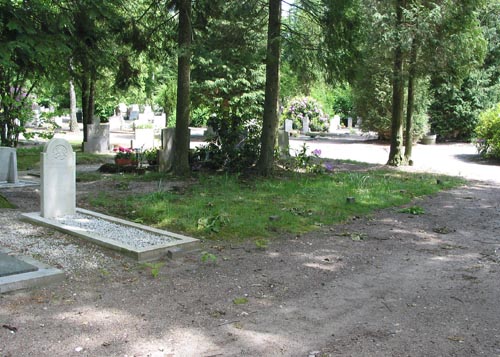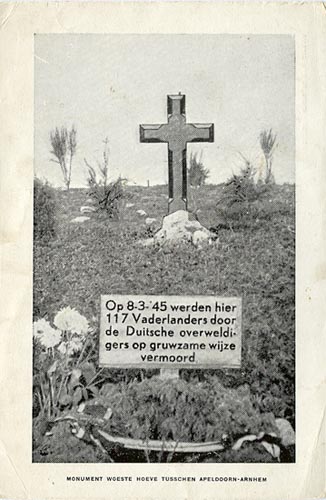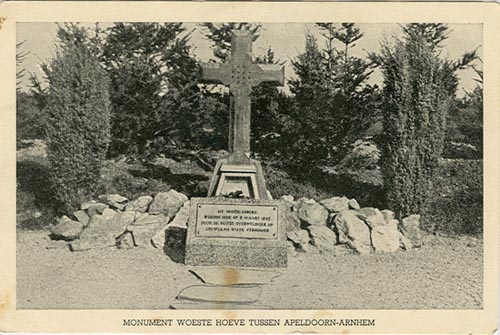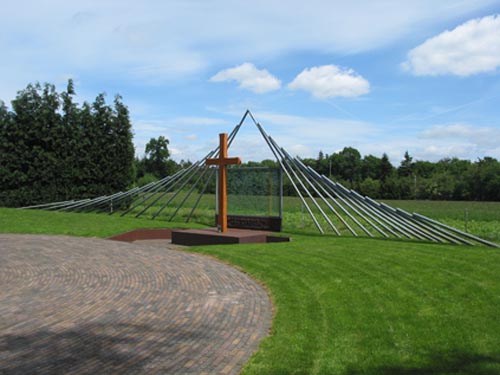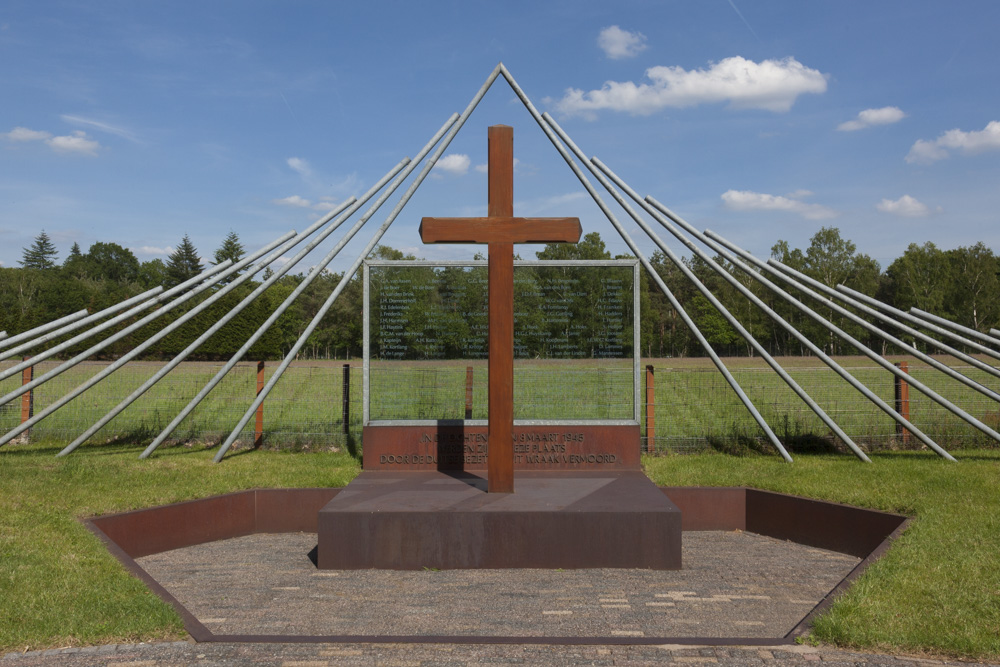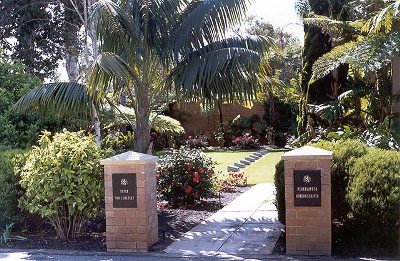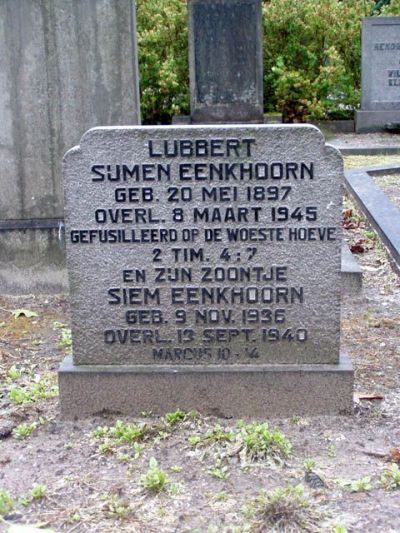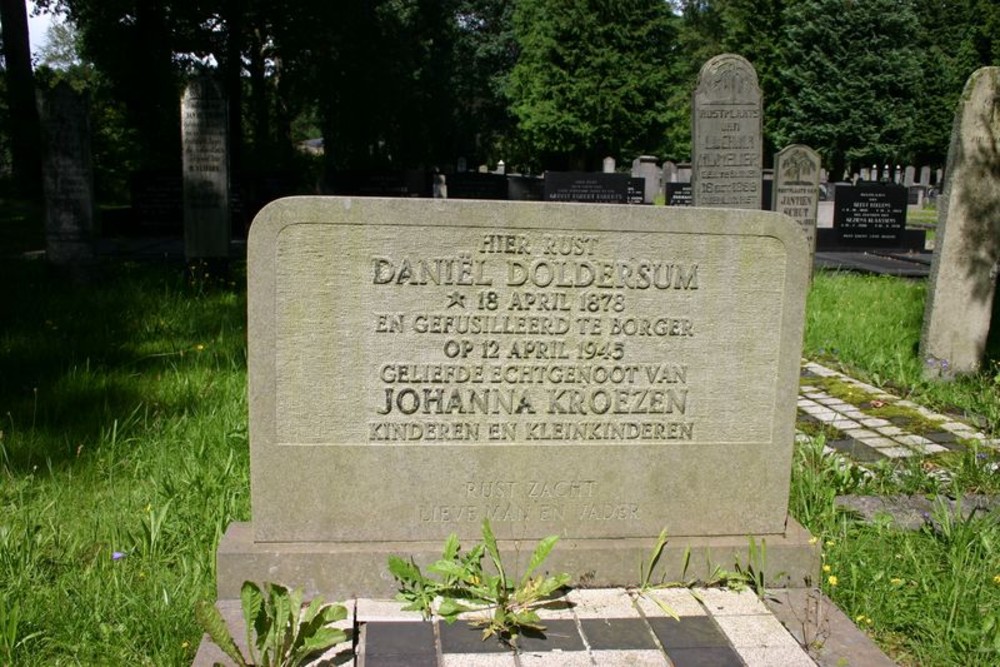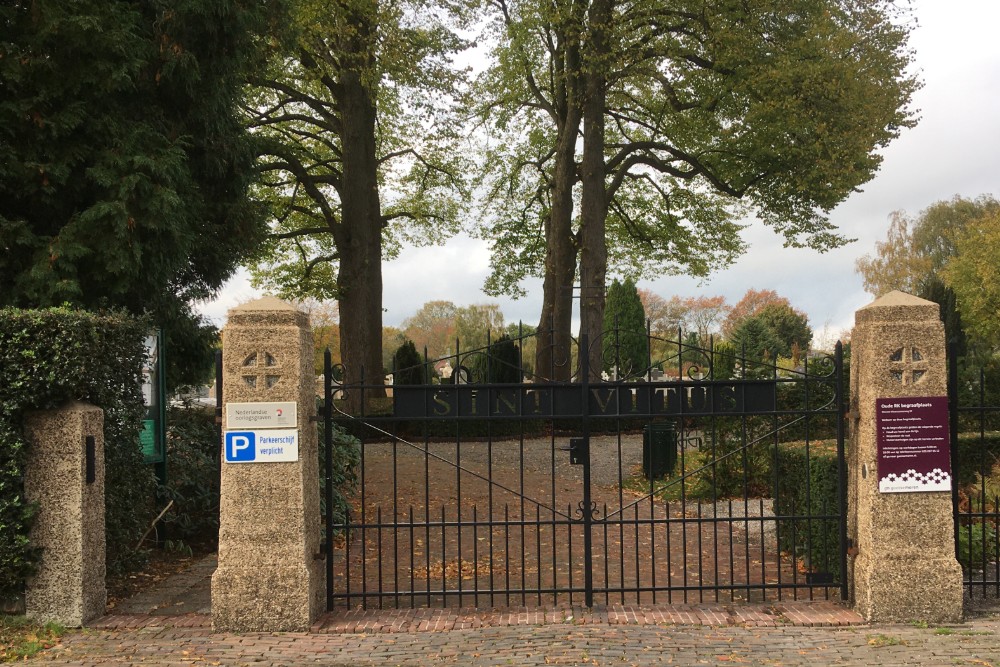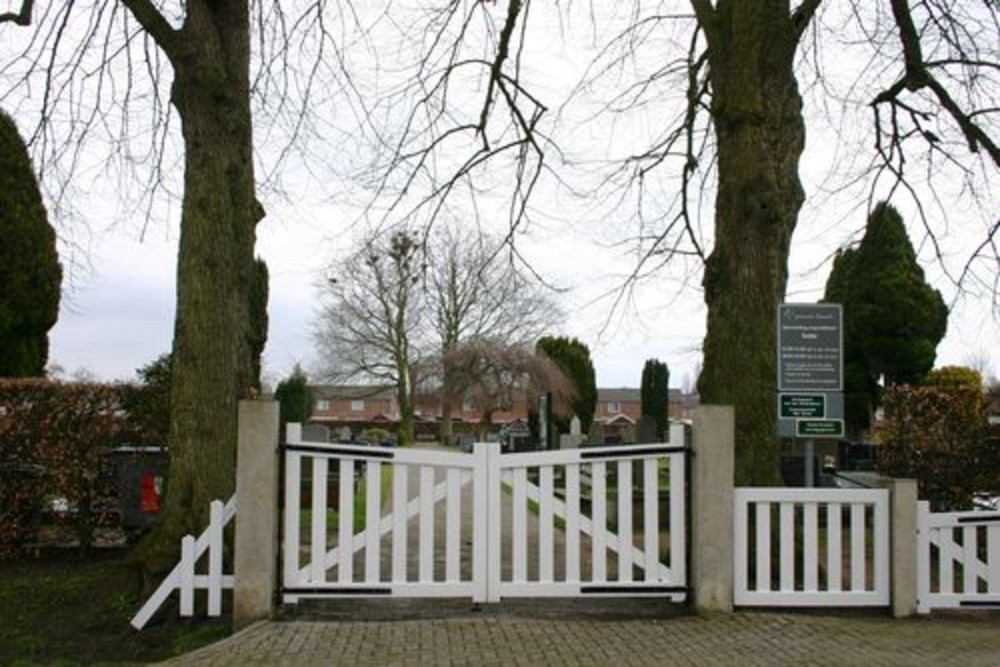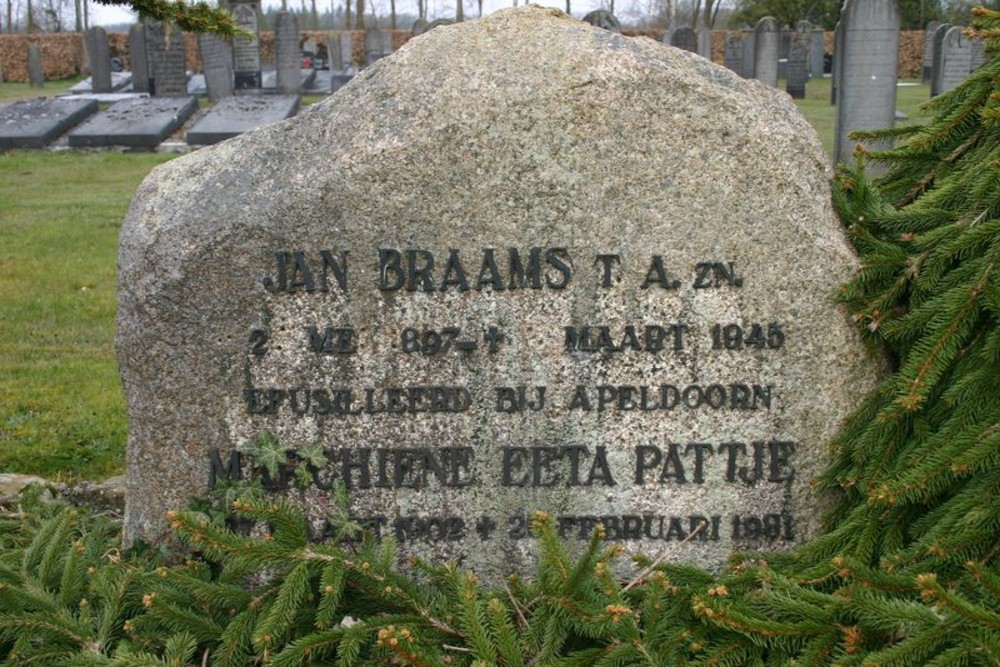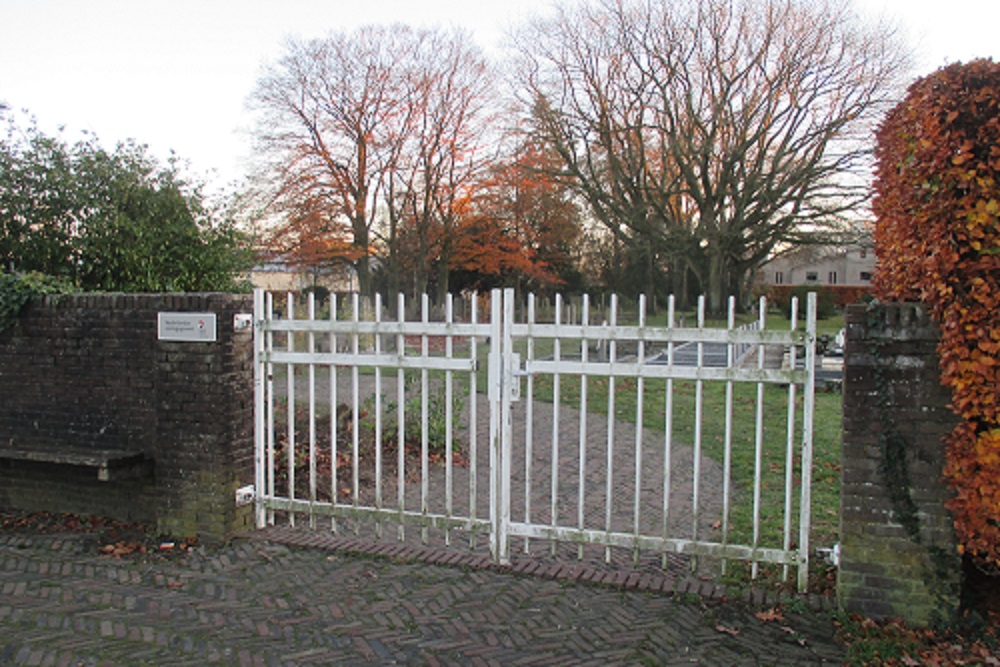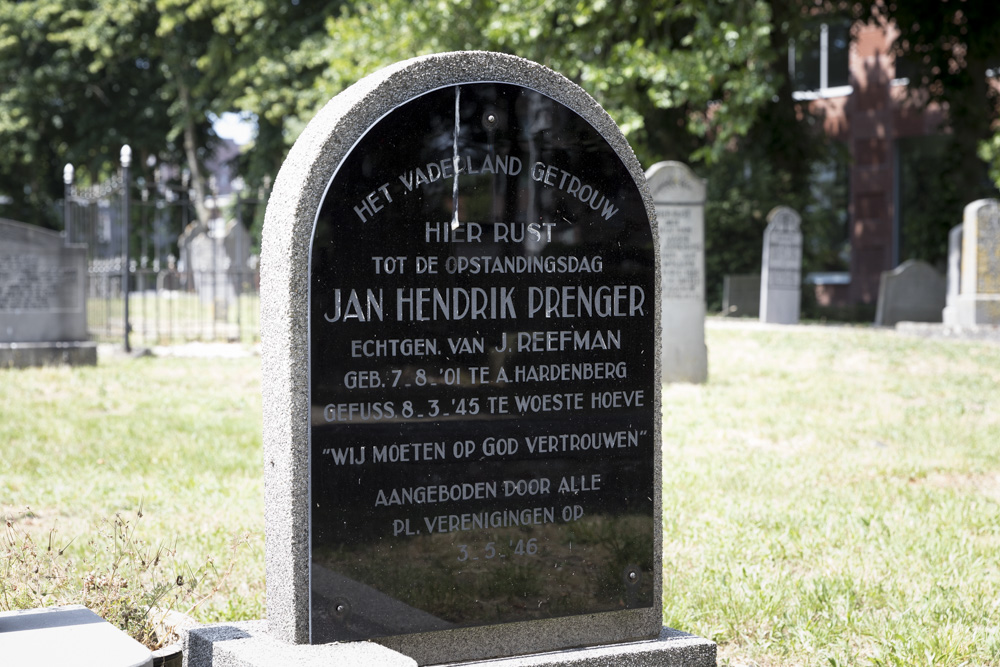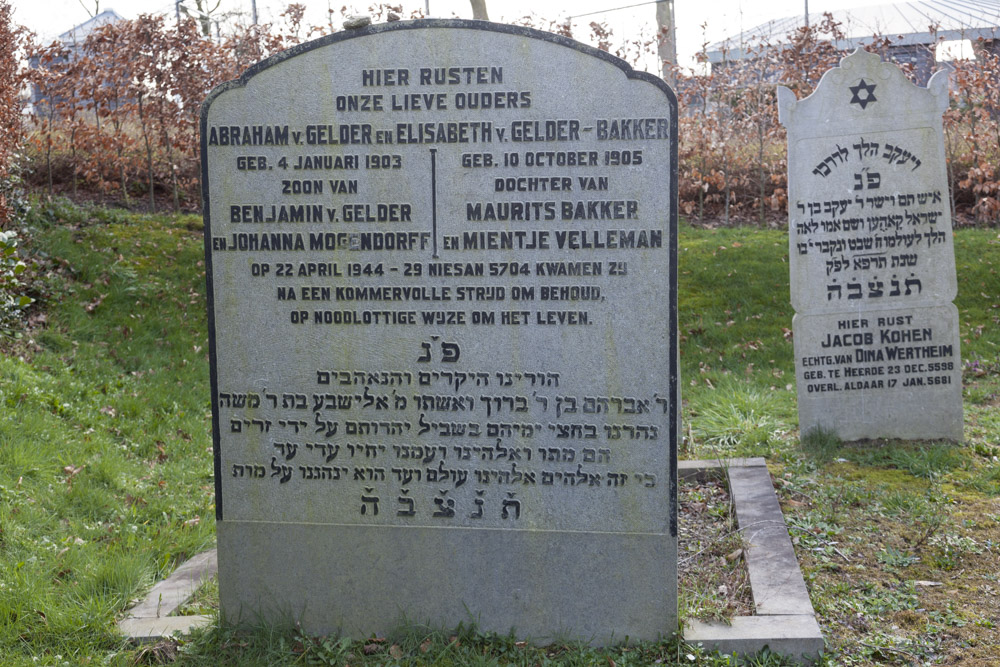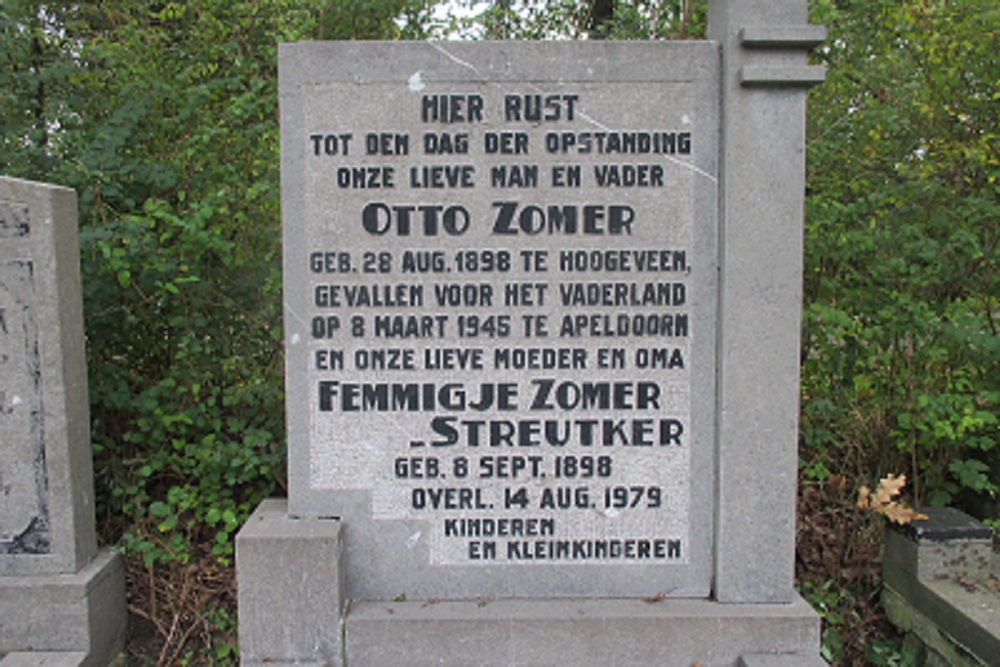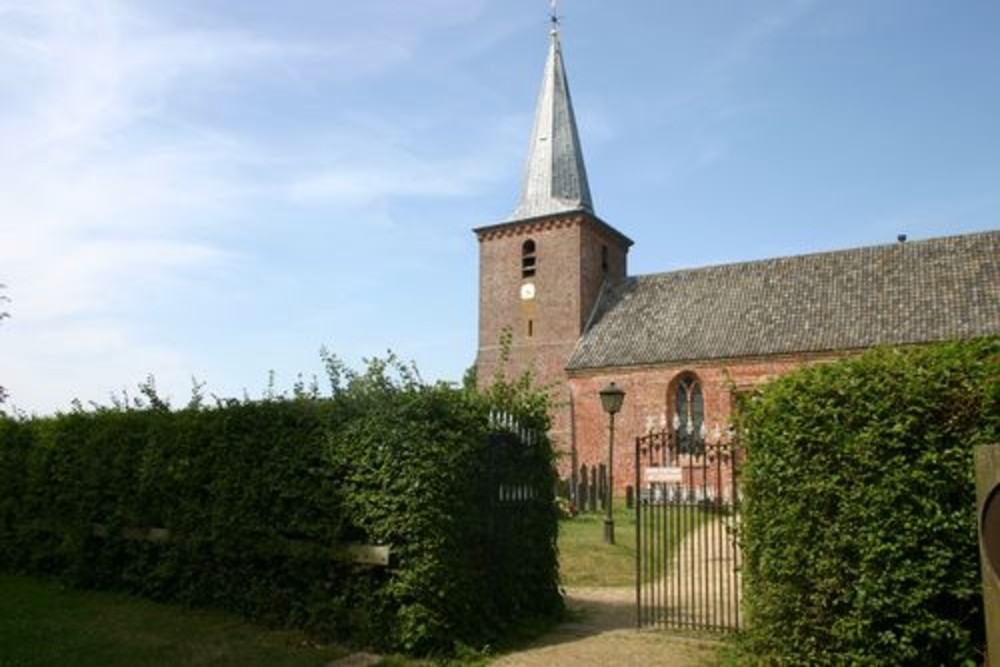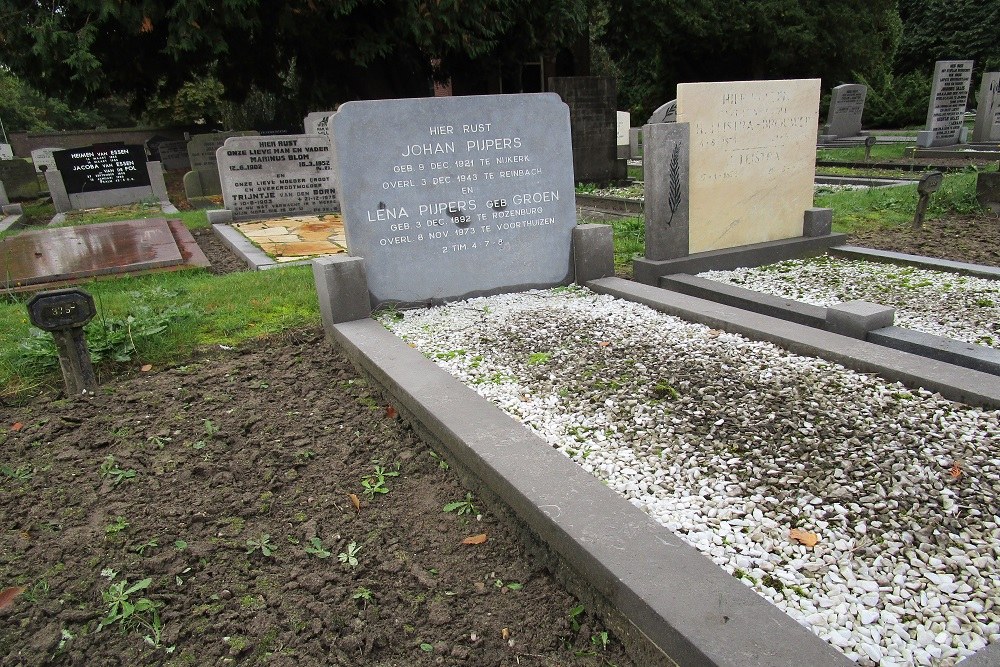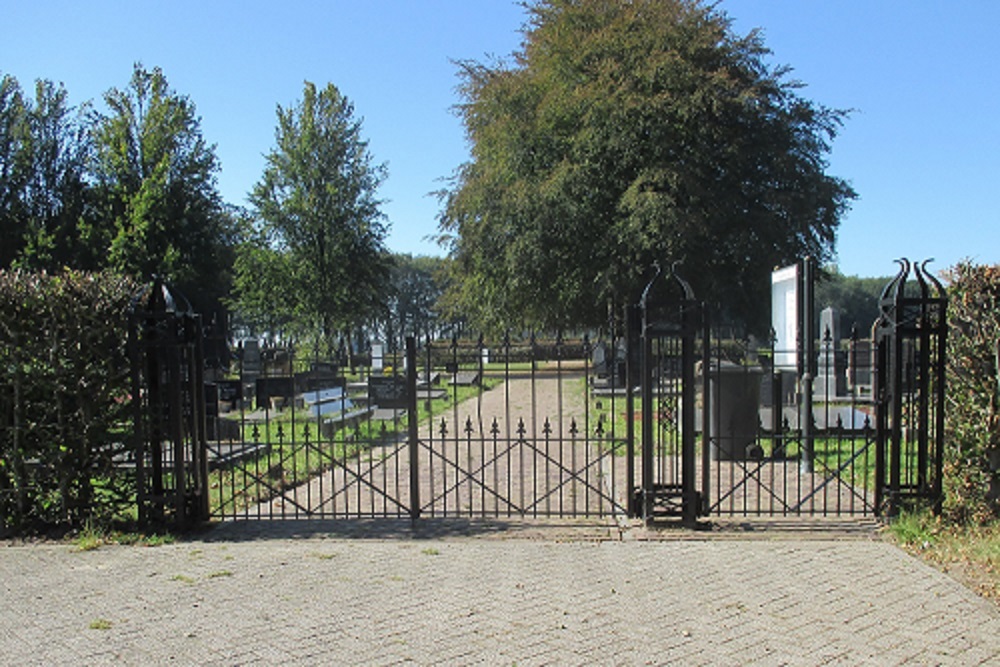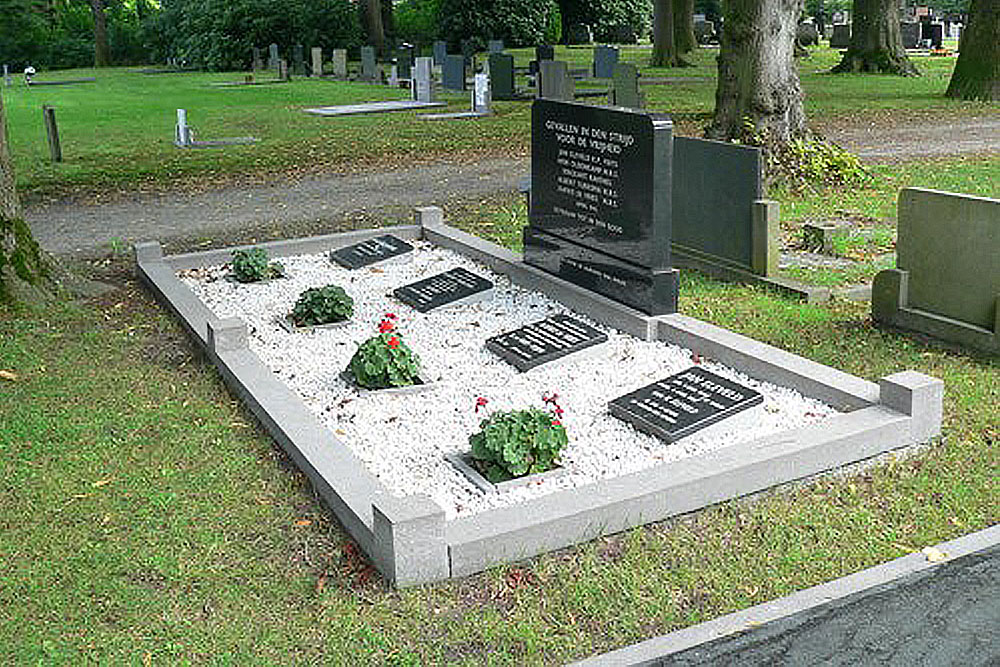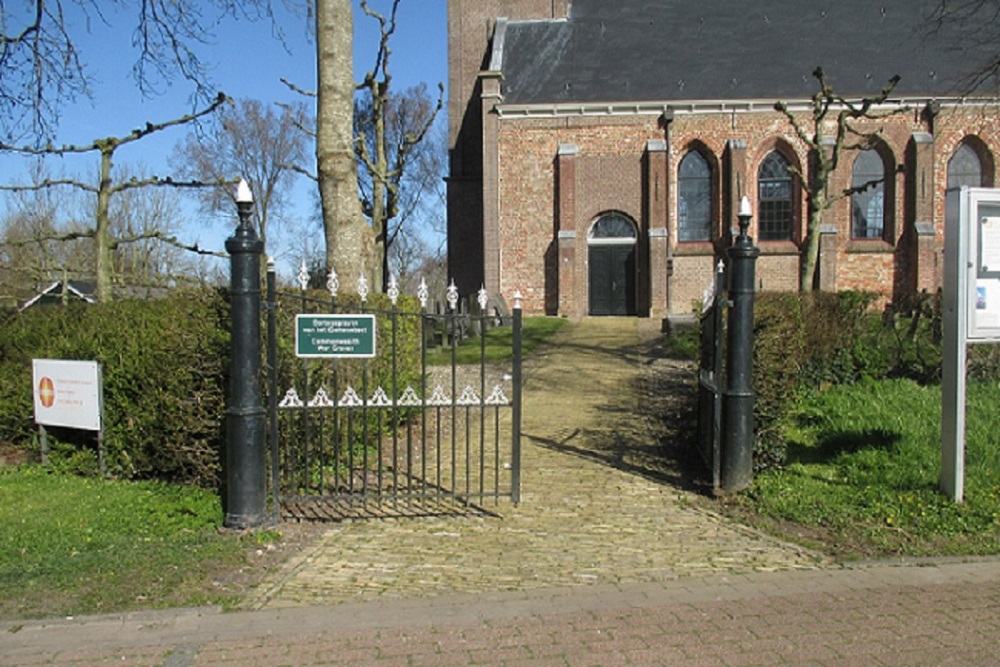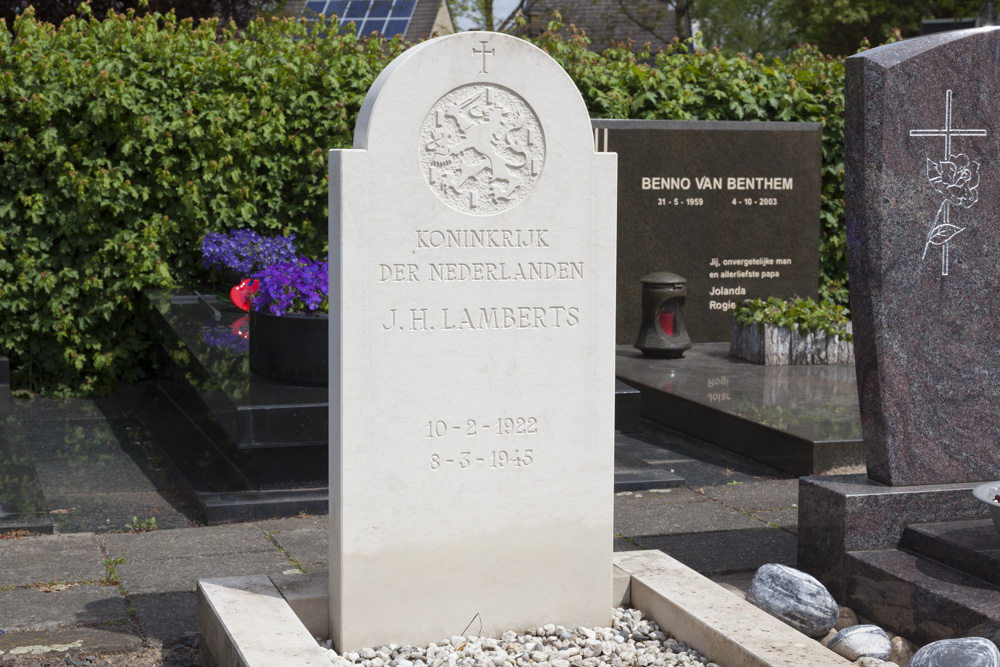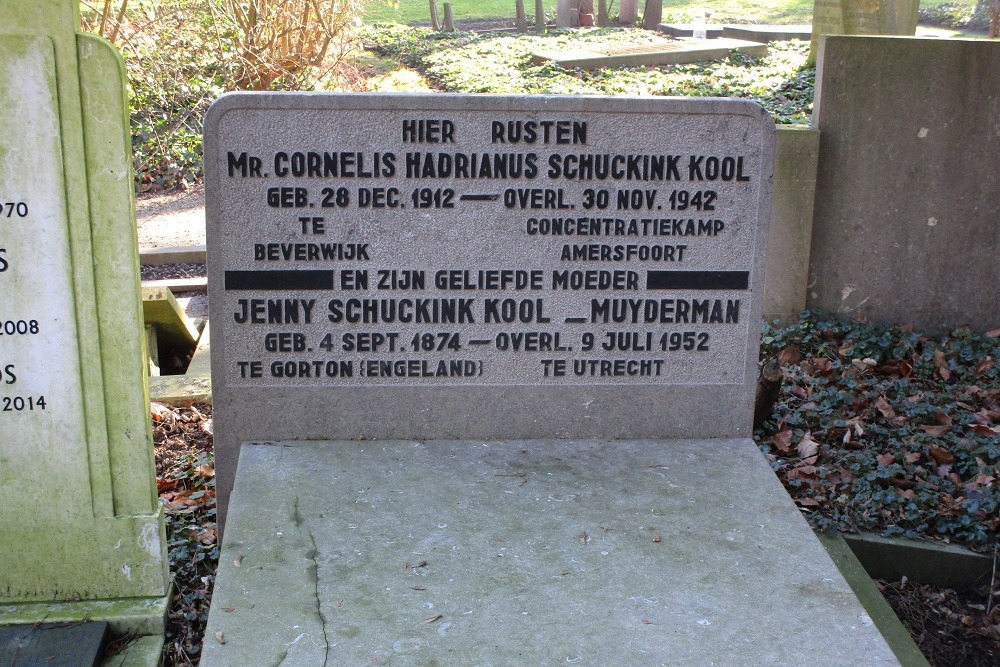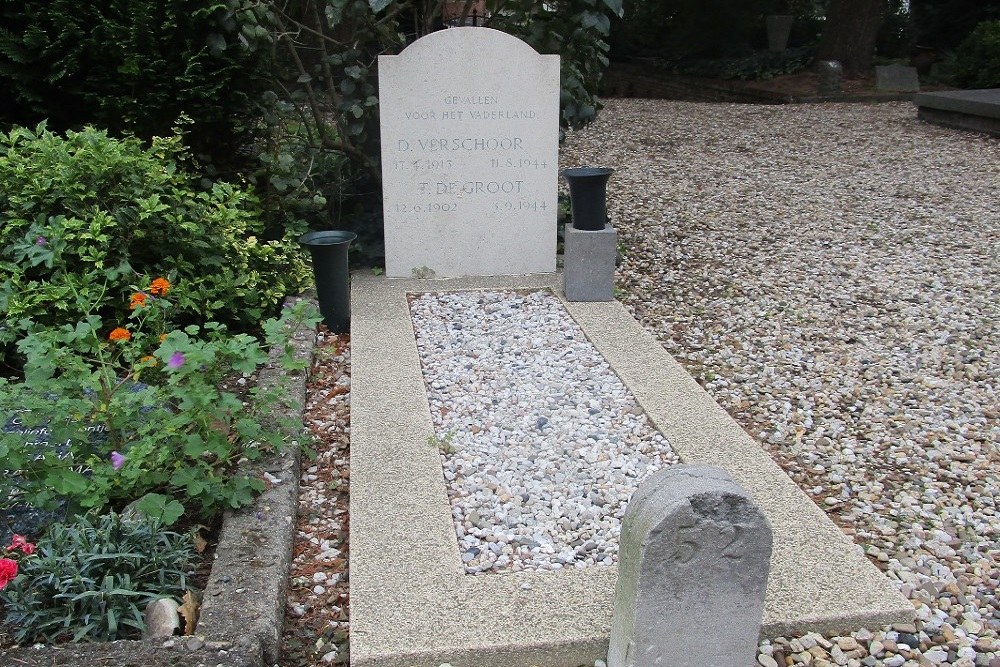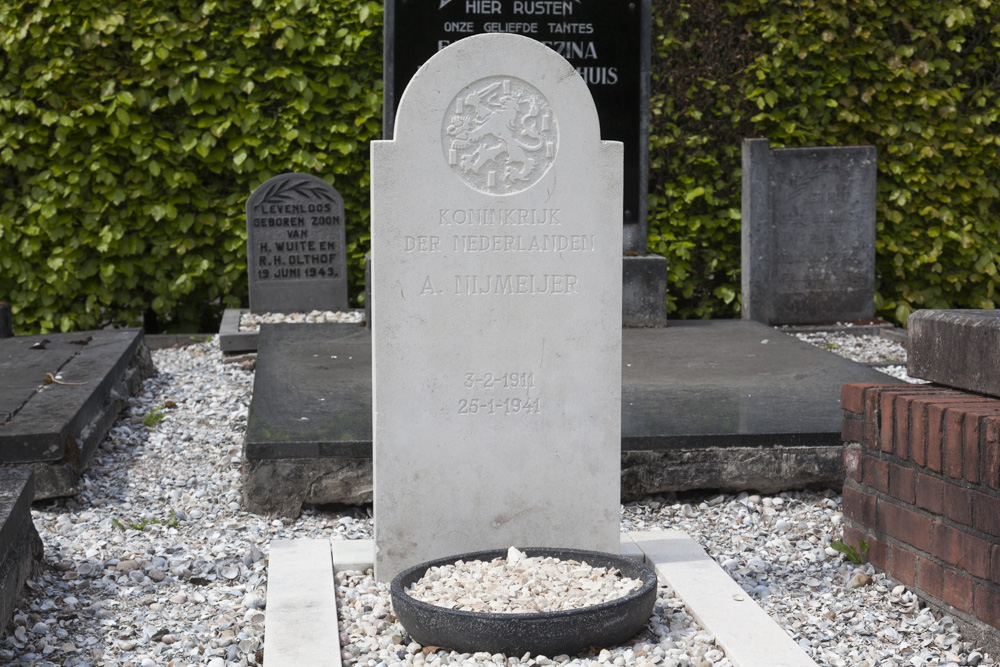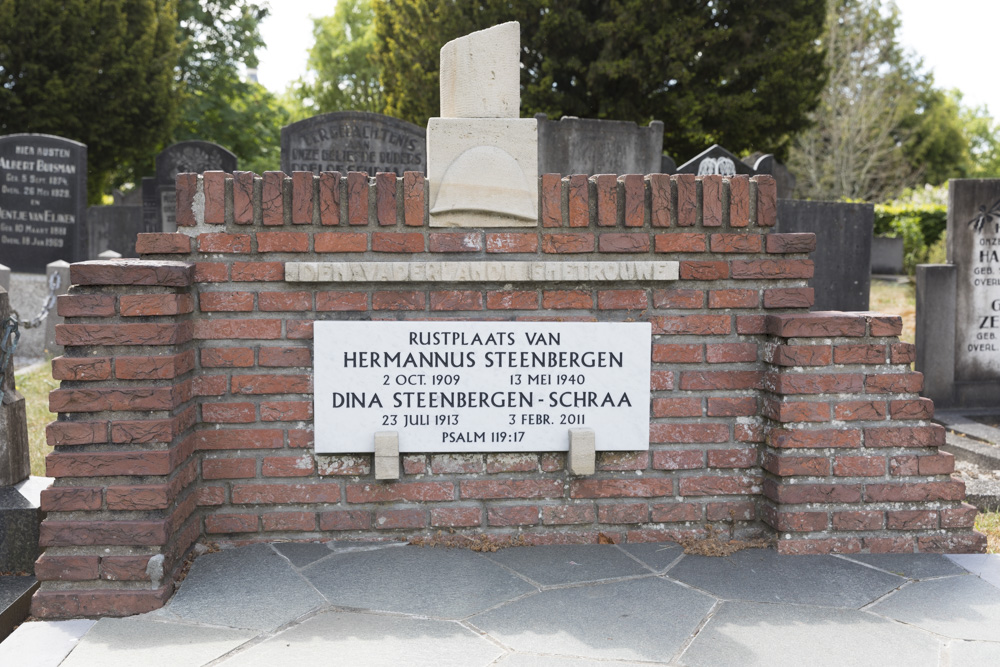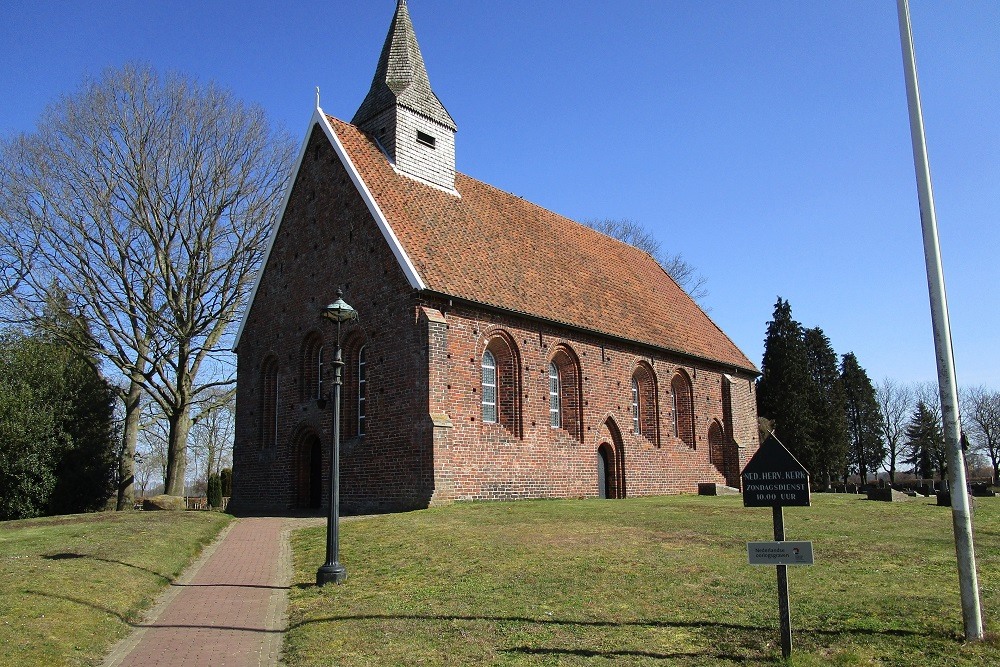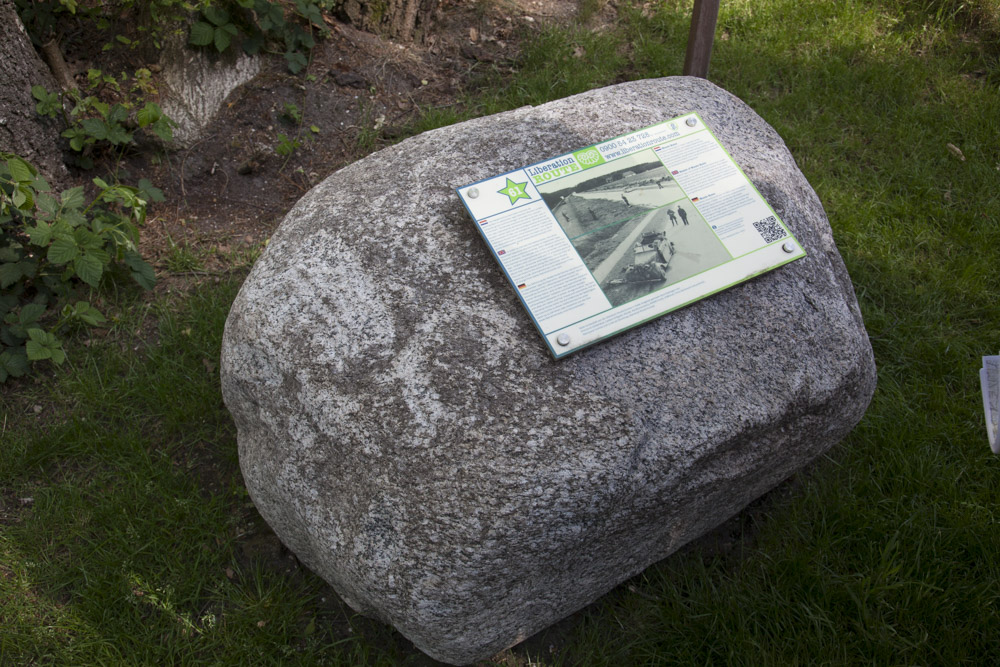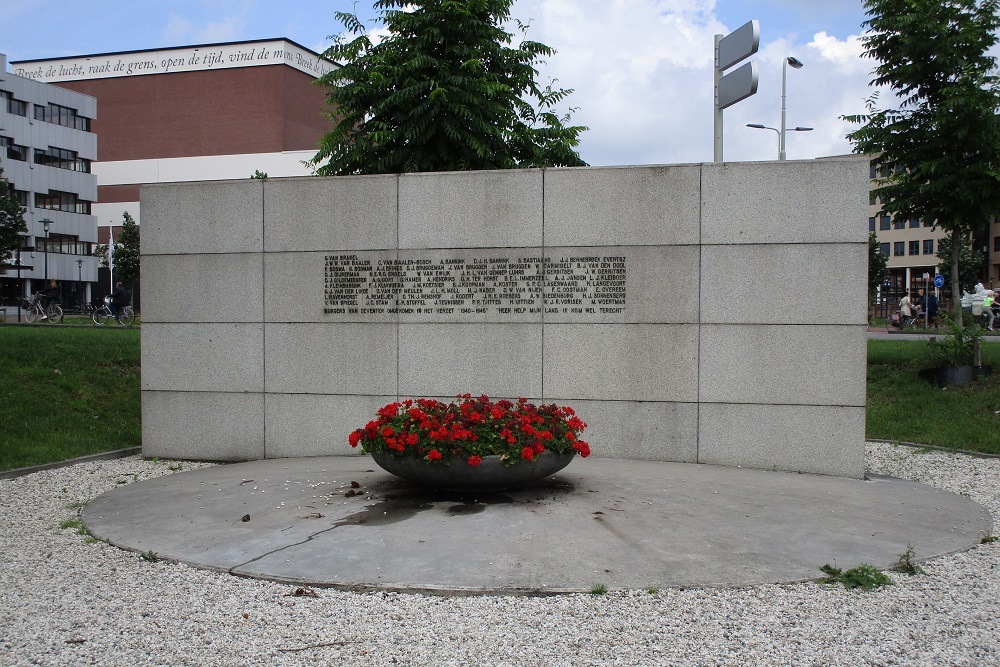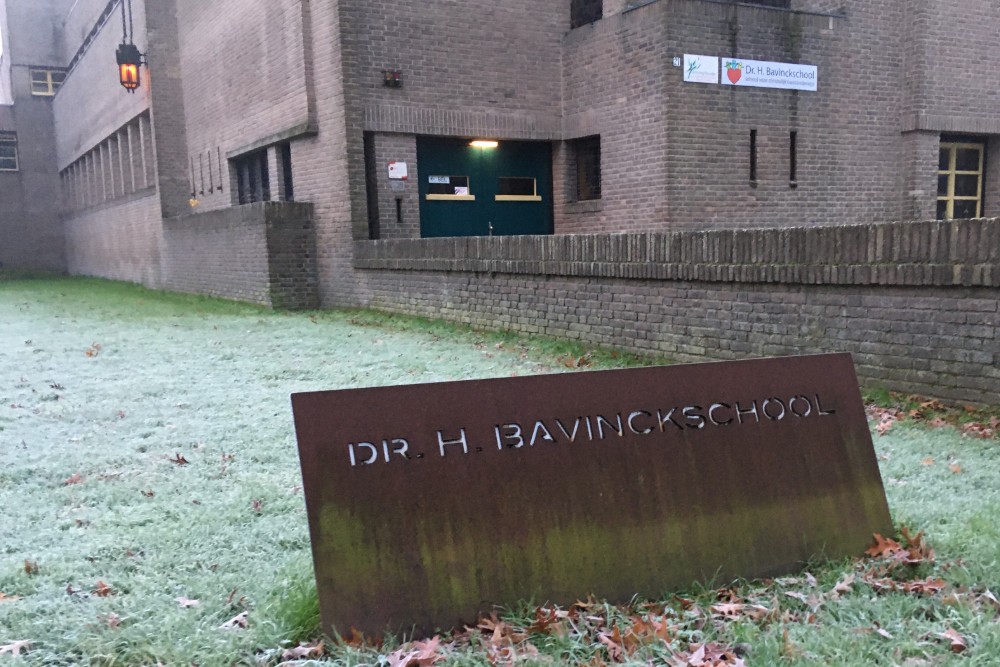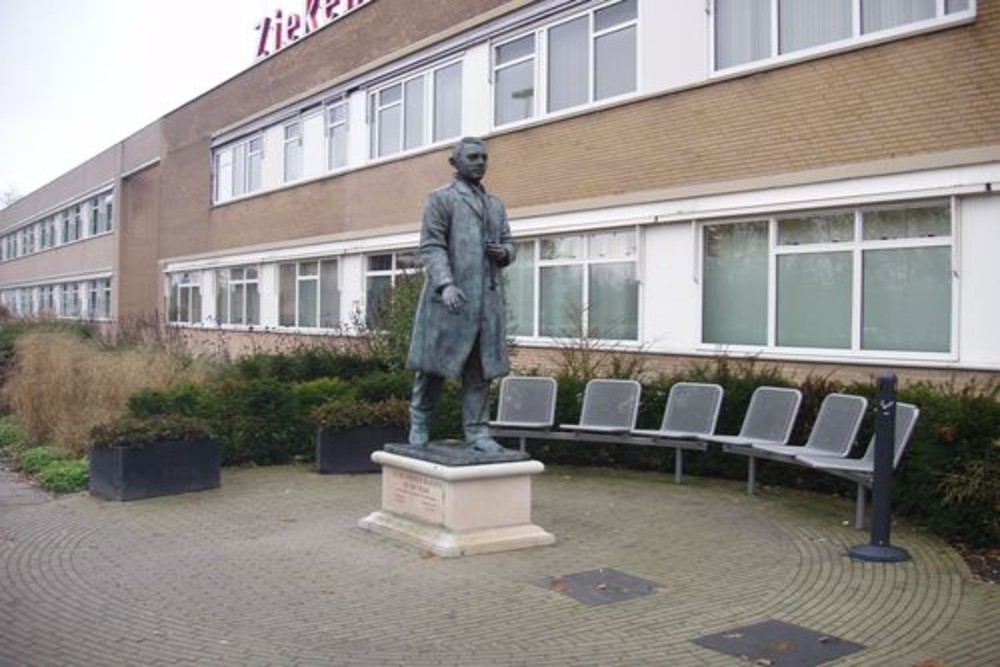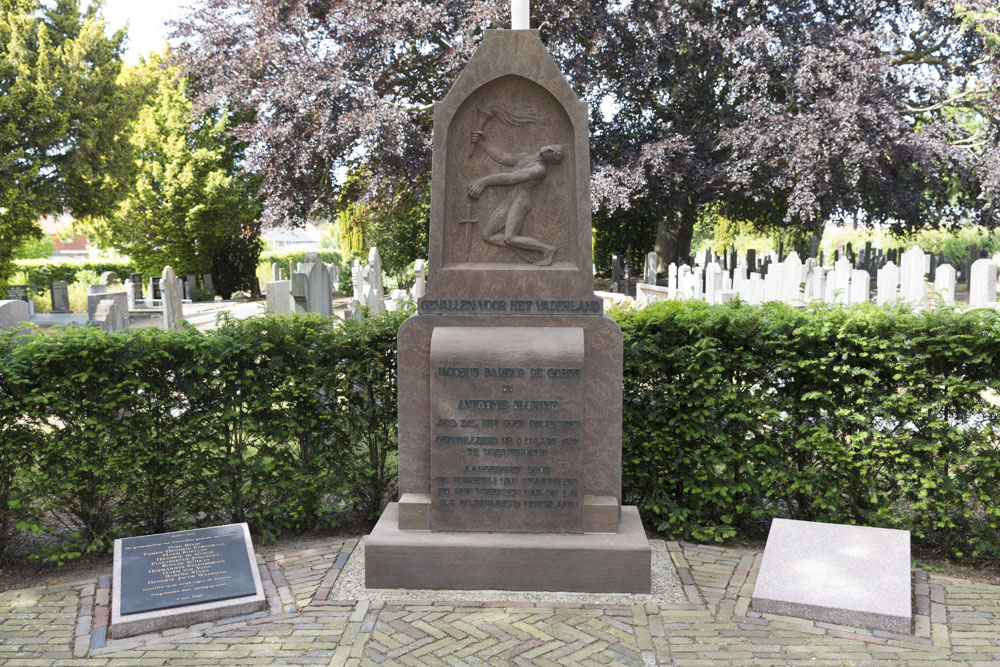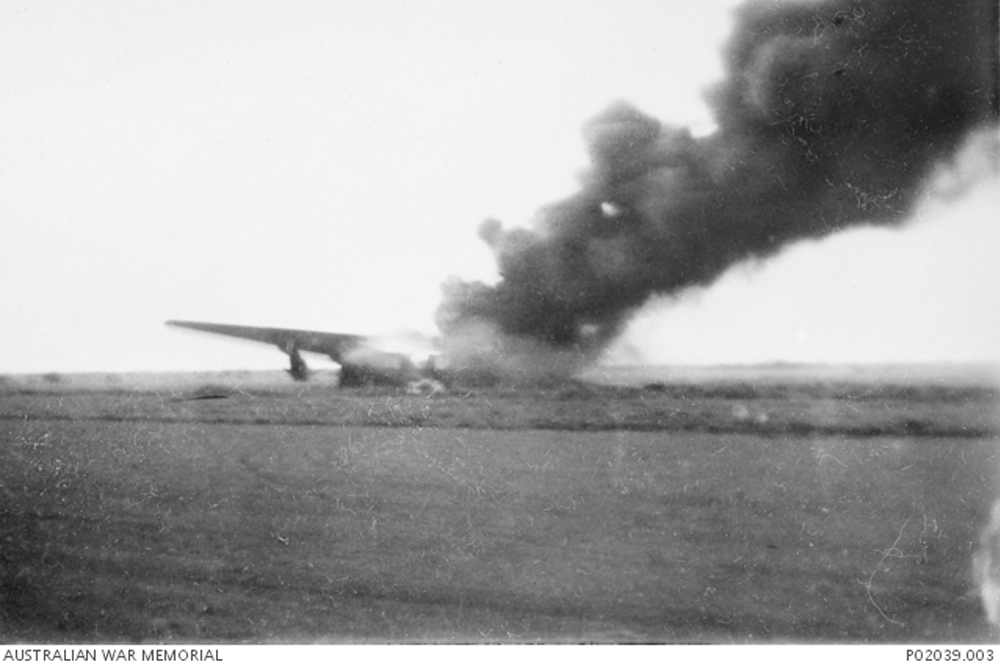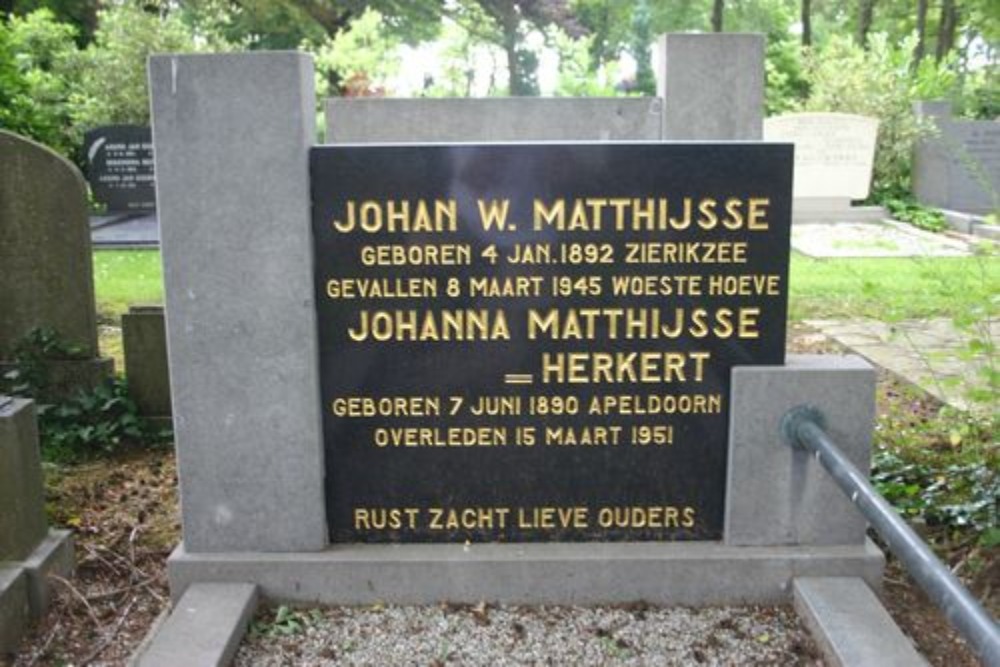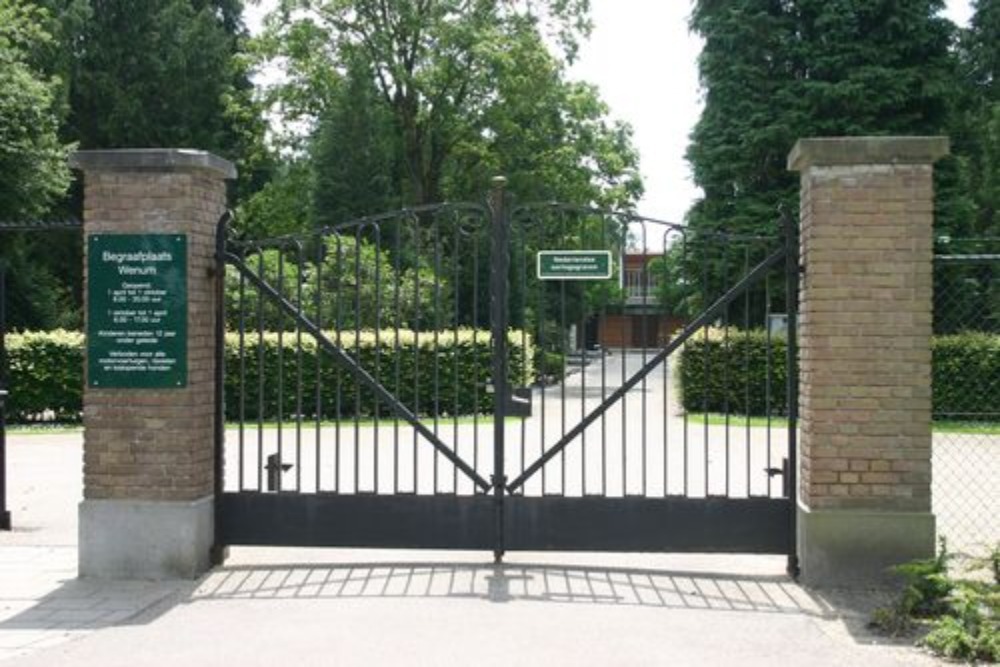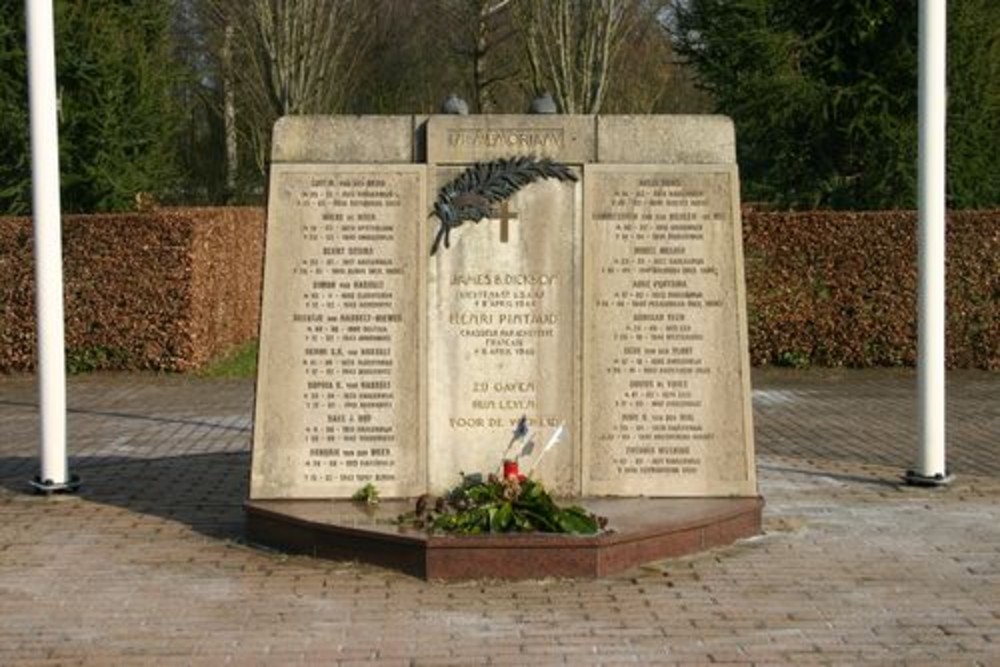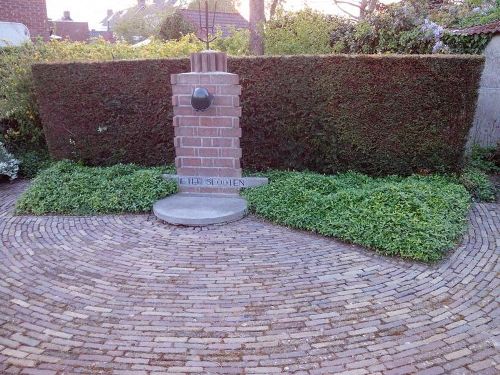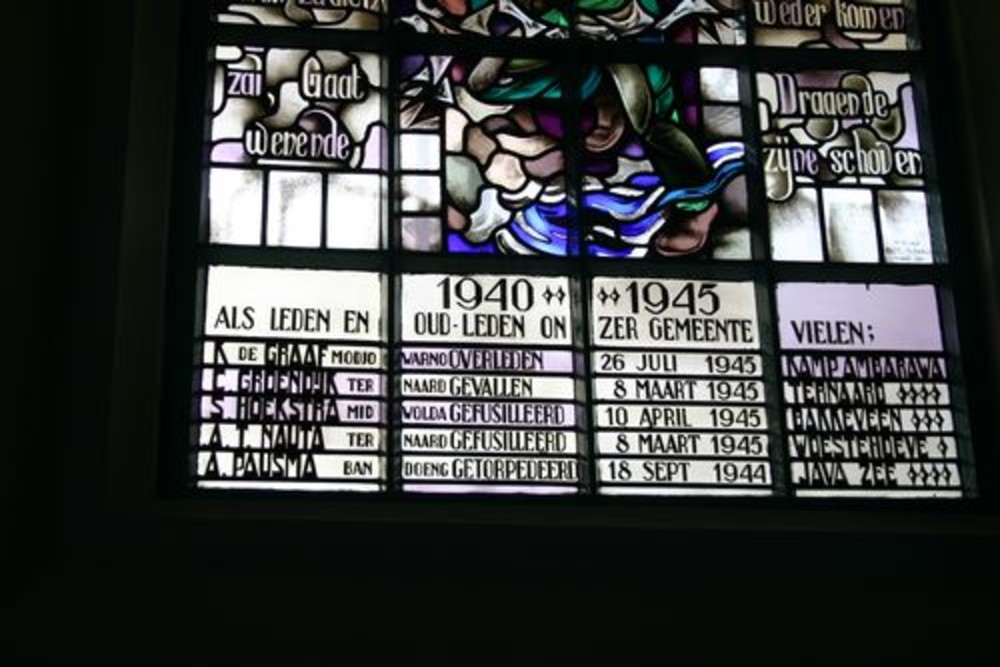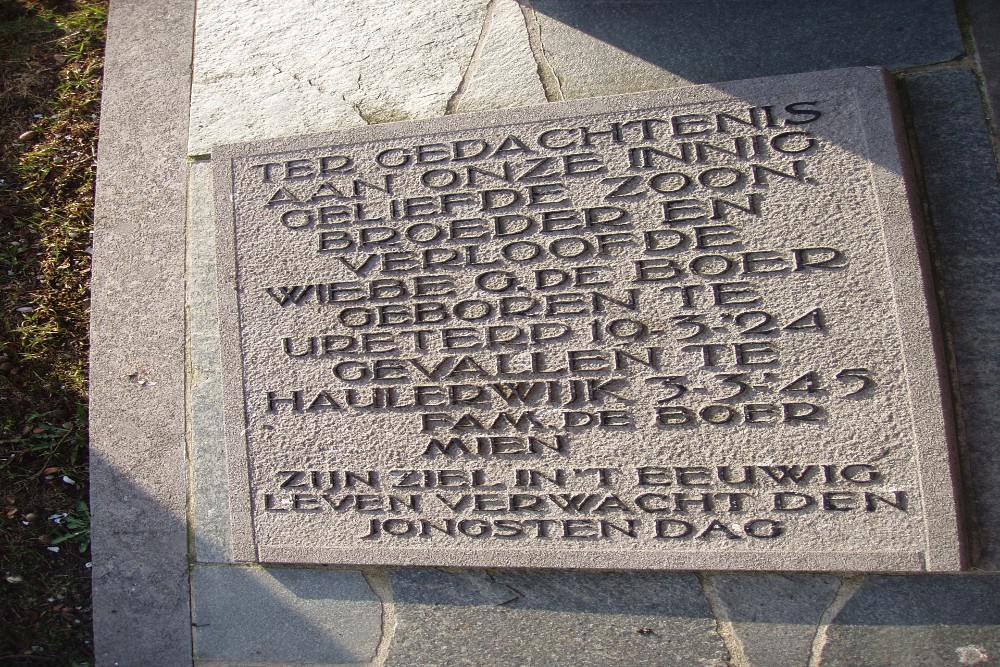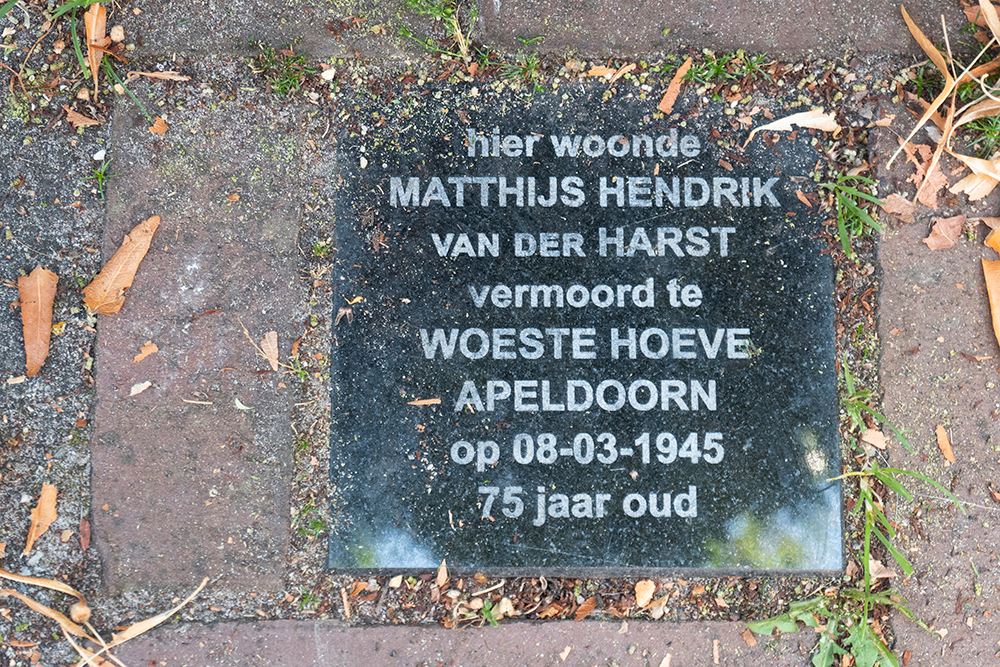Inadvertent attack on Rauter at Woeste Hoeve
In the fall of 1944, the failure of Operation Market Garden resulted in a flood of evacuees from the area around Arnhem. The Allies were looking for a passage across the Rhine and in the spring of 1945 a new attempt was planned. The population of Arnhem and surroundings were, for a major part, looked after in Apeldoorn, where the huge stream of refugees caused a shortage of food.
The robbery
On the evening of March 6th, 1945, in Apeldoorn the resistance received information that, the next morning, the Wehrmacht would pick up three thousand pounds of meat from a slaughter house in Epe. Such a large quantity of meat would be very welcome for the many refugees in Apeldoorn. The resistance group of Geert Gosens was commissioned to pick up the meat at the butcher with a truck before the Germans would do so. The resistance group already was in the possession of uniforms to impersonate as German soldiers. However they needed a truck. Therefore Geert Gosens decided to hold up a truck of the Wehrmacht, together with his men and to let the crew “disappear”; an action the group previously already had performed successfully. Moreover, during the last year of the war, the organization of the German army was such, that a truck would not be missed. Also, in those days, German soldiers deserted regularly, so even they would not be missed.
Around ten o'clock that evening, the men left for the direction of Woeste Hoeve by bike. They all were dressed in an SS uniform as well as the Austrians Sepp Köttinger and Herman Kempfer, who had deserted the Waffen-SS. Except Wim Cook, who was dressed in his military police uniform. Furthermore the Gosens group consisted of Henk de Weert and Karel Pruis. The Arnhemscheweg seemed the most suitable place for a robbery of an empty truck, which returned from the front line. At the railway crossing of the Christian Geurtsweg the men were stopped by Luftschutzwacht and thanks to the two Austrians, the men soon could continue their way. In order to try out their disguise, the men stopped a private truck in Beekbergen. The Dutch driver had not noticed anything. When they arrived at the inn " Woeste Hoeve", they hid their bikes near the roadside and made their weapons ready. That night it was pitch-dark and the men had to rely on sound to pick out a suitable vehicle. The group had passed a number of light vehicles, but came into action when, at half past one in the night, a heavy car approached. However, instead of a truck the vehicle turned out to be an open BMW with some German officers. The passengers sensed trouble immediately and drew their weapons. Gosens ordered them to get out of the car, but the men remained seated, which caused Gosens to jump on the hood and fire two shots through the windshield. He jumped beside the car and once again ordered the passengers to get out. The Germans made no attempt to obey; on the contrary, they drew their weapons. Gosens did not hesitate and commanded to open fire, which made his companions to shoot their guns empty at the car. More than 200 bullets were fired at the car and its occupants. Oberleutnant Exner, in the backseat, was riddled with bullets and died instantly. The driver was probably killed by the first shots of Gosens. The man next to the driver was still alive, but he was not recognized, despite his general uniform, due to the faint glimmer of the one and only flashlight the men carried with them.When a truck approached from the direction of Arnhem, the men dived into a roadside ditch. The truck of the Wehrmacht stopped beside the BMW and then drove on quickly. The men climbed out of the ditch, checked the car with passengers again and seemed to be convinced that all occupants were dead. When another car approached, the men had the good sense to make off, leaving a severely wounded officer behind in the riddled BMW.
About one hundred and fifty Germans, stationed nearby, were alarmed by the gunfire, but did not dare to take a look. That night, at three-thirty pm, the seriously wounded officer was discovered by German soldiers, who were on their way with a convoy of horses. The Kriegslazarett in Apeldoorn was warned by telephone at the inn. Only after the arrival of the German Red Cross, one discovered that the officer was Hanns Rauter, the highest SS and police chief in the Netherlands.By ambulance, Hanns Rauter was transferred to the Kriegslazarett in Apeldoorn. It appeared that he had sustained a double lung shot, a jaw shot and a shot through his thigh. Moreover, he had lost a lot of blood.
The next morning, the Sicherheitsdienst (SD) immediately started an investigation and quickly came to the conclusion that it was an attack by the resistance. Rauter, convinced that the attack was aimed at him deliberately, recognized Geert Gosens from a picture, as one of the perpetrators. The SD in Zwolle formed a special investigation team, which was to investigate the matter. In the inn, a room was fitted up as interrogation room. Only one of the residents in the area would say that they had heard the shots.Todeskandidaten
SS Brigadeführer Schöngarth took over Rauter’s tasks and was generally held responsible for the execution of the culprits. It was a feared retaliatory measure, instituted by Rauter himself, by which so-called Todeskandidaten were to be shot. Todeskandidaten mostly were political prisoners who were sentenced to death for the littlest things and subsequently had to wait for a suitable opportunity which would give the Germans a reason to carry out the sentence.
Several SD commanders, throughout the country, were instructed to find at least three hundred Todeskandidaten in total. In Amsterdam, the notorious SD Commander Willy Lages 'only' came to a number of fifty-nine men, although his order was to deliver seventy-five men. In the early morning of March 8th, fifty-three of them were shot. Six Todeskandidaten were shot at Fort De Bilt in Utrecht. After May 1945, a member of the execution command stated that, in addition to the six Todeskandidaten, another eleven men were killed that day. As wells as twenty-seven Todeskandidaten, eleven other prisoners were shot at the Waalsdorpervlakte. In Amersfoort, just outside the Durchgangslager forty-nine Todeskandidaten were shot. However at the scene of the attack, at De Woeste Hoeve, one hundred and seventeen people would eventually be shot. These Todeskandidaten came from prisons in Assen, Zwolle, Almelo, Colmschate, Doetinchem and Apeldoorn. In the evening and at night, the prisoners were transported to Apeldoorn and subsequently, at half past seven in the morning of March 8th, they were taken towards De Woeste Hoeve in buses and trucks. On their arrival, the firing squad was already waiting. The squad consisted of about fifty Germans of the Waffen Schule der Ordnungspolizei, stationed in Amersfoort. The prisoners were taken to the place of execution, a trailer, in groups of twenty, where the reason for the execution was read out. Next, they were executed. Five minutes later, another group faced the same fate. Men, who were not dead immediately, were killed by extra shots.The Apeldoorn resistance group, whose members were responsible for the attack on Rauter, heard that the Germans would take reprisals and left for De Woeste Hoeve in order to avoid possible executions. However, when the armed group arrived, a group of one hundred and fifty men of the Ordnungspolizei and Waffen-SS was occupied with laying the hundred and seventeen executed victims along the side of the road. Then the road was reopened and passers-by were forced to walk along the victims, sometimes even several times.
Almost immediately, the rumours started. There was uncertainty about the number of victims and their identity. Some feared that the victims were accidental passers-by; others suspected them to be prisoners from Camp Amersfoort.
The reactions
During the days after the events at De Woeste Hoeve, but also elsewhere in the country, news was published in the German version of the underground press, that the attack was carried out by the resistance. This was called in question. Also in the resistance questions arose, but it soon became clear that it was not a planned attack on Rauter. Something Rauter himself still was convinced of. The Germans, in turn, were not very generous regarding the coverage of the attack on Rauter. Maybe logical, since they did not like to admit that the highest SS and police chief of the country travelled practically unprotected. People could get ideas from this knowledge. The Germans maintained their statement that it was a deliberate attack, but it is very unlikely that the resistance was aware of the fact that Rauter was travelling along that specific spot, without any guard. And given the presence of the German troops, stationed nearby, a more remote location for an attack on Rauter would have been more logical; as now a fire fight had occurred which never had been the intention. Finally, they had been lucky that the Germans, stationed nearby, did not dare to come out.
In Het Parool of March 17th, 1945, the attack on Rauter was called a pretext. "Meanwhile, it is highly doubtful whether the attack was committed by the Dutch. The leaders of the resistance movement did not order it. Rather, it is much more plausible that the shooting was organized by Rauter's enemies from the Wehrmacht or by NSB members or that one of many groups of German deserters, who crossed the Veluwe looting and robbing, were responsible for the shooting". In Het Parool of March 27th, 1945, one seemed to be convinced of a plot by German officers and therefore the SD had no interest in resolving the matter.The responsible resistance was not willing to communicate their actions to the outside world. Now the war was about to come to an end, it was important not to set the ordinary people against them. Actually, they could use all the support to give occupiers a hard a time as possible. After the war, in particular due to the publication Ik draag u op (I command you), in 1946, about the Apeldoorn resistance, it became clear who was behind the attack on Rauter. It must be stated that almost all reports on that specific event, that night at Woeste Hoeve, are based on the slightly “coloured” eyewitness report in “I command you”.
The mass grave
In the afternoon of March 8th, 1945, the SD ordered the local police to bury the bodies of those who were shot at the cemetery Heidehof in Ugchelen. Without any identification, the dead men were buried in a fifty meter long mass grave. However, they were buried in the same order in which the men had been laying beside one another at Woeste Hoeve. Since the men were shot in the order in which they had arrived in Apeldoorn, one could at least distract from what prison the victims originated.
On April 25th, 1945, one week after the liberation of Apeldoorn, digging up the victims and identifying them started. On average, fifteen excavations per day were carried out. At the identification, some special characteristics of the victims and their clothing were registered. Objects such as rings and documents were stored in a piece of cut off clothing in numbered bags.Every day people came to the Heidehof, hoping to find relatives. After identification or after registering the characteristics, the victims were reburied in a coffin at a nearby cemetery. There, one hundred and seventeen victims were buried in eighty three graves. When relatives came forward, the coffin was exhumed and given a resting place in the victim's place of origin. After about five weeks still sixteen victims were not yet identified. An announcement was published in various newspapers. On June 18th, 1945, even extensive personal descriptions of the thirteen persons were published. At the end of June, there were only three unidentified victims. Finally two victims were not identified.
In March 1950, thirteen victims were buried at the original cemetery. They have been reburied in the graves with the numbers 1026 to 1038. The path which leads to these graves was called “the Woeste Hoeve Lane”.On November 2nd, 1982, nine of the thirteen victims were transferred to the Field of Honour at Loenen. At the explicit request of a survivor, they were buried here in the same order as at the Woeste Hoeve Lane. In June 2006, four victims are still buried at the Woeste Hoeve Lane. Only at the grave of one of them, Jacob de Boer, is a tombstone placed. Helmut Seyffards, Jean G. Joosten and F. A. Molijn do not have a tombstone.
The stakeholders
Rauter was to recover from his injuries in Germany and only returned to the Netherlands for his trial after the war. He was sentenced to death and executed on March 25th, 1949, at the Waalsdorpervlakte. The location of his grave is a state secret, but presumably he is buried at a German military cemetery. Schöngarth, who was held responsible for reprisals, was sentenced to death and hanged in Germany, because he had ordered to shoot a crew member of a British aircraft in Twente in November 1944.
Two members of the group Gosens did not survive the war. A week after the events at Woeste Hoeve, the Germans carried out a major raid where, in the woods between Eerbeek and Arnhem, Pruis and Kempfer ran into a German patrol while they were trying to move weapons and ammunition. Karel Pruis was killed in a subsequent fire fight and was found dead at the Imbosch, later on. He is buried at the municipal cemetery Heiderust at Rheden (grave number 595) It is assumed that Herman Kempfer was killed in the fire fight as well, but his body was never been found.The monument
On July 21st,1945, on the initiative of the Binnenlandse Strijdkrachten (Internal Forces, BS), a simple memorial was unveiled near the place of execution. The monument consisted of a wooden cross on a base of boulders. On a wooden sign the text: "‘Op 8-3-’45 werden hier 117 Vaderlanders door de Duitsche overweldigers op gruwzame wijze vermoord” (On 8-3 - '45, 117 patriots were killed here in a gruesome manner by the German captors).
At the ceremony a guard of honour was formed by members of the BS departments Loenen and Apeldoorn. The commander of the BS department Loenen made a short speech, after which the monument was transferred to the municipality of Apeldoorn. The mayor of Apeldoorn also held a speech and concluded with the words: "This memorial will be honoured by the citizens of Apeldoorn, far into posterity".
At a ceremony on May 4th, 1947, Queen Wilhelmina laid a flower arrangement in the shape of a pillow, showing the resistance cross in flowers. In 1948, some survivors declared that they would like a plaque at the monument, with the names of the people that were shot, and a bench. For unclear reasons, the town council did not respond to this request. "The council considers it desirable not to publish names at the monument. For one, for the sake of three undisclosed people”. Yet, the wooden sign with the inscription was replaced by a bronze plaque, with a slightly modified text: “117 vaderlanders werden hier op 8 maart 1945 door de Duitse overweldiger op gruwzame wijze vermoord” (Here 117 patriots were murdered in a gruesome way by the German captors, on March 8th, 1945).
On March 8th, 1970, there was the last official commemoration. Perhaps, after 25 years, one would have thought to have remembered enough. In 1979, the original cross was replaced by a larger one. Still a bench was placed and a parking space was created as well. But still, the names of the victims were not mentioned. When in 1987 the monument was adopted by the primary school De Touwladder, the annual commemoration was continued. At the same time, personal initiatives made clear that there still was a want for a new monument, including the names of the victims.
In 1991, the Stichting Monument Woeste Hoeve (Foundation Memorial Woeste Hoeve) was founded and relatives chose a design by artist Hans Morselt. The politicians, however, decided otherwise and opted for a design by the Apeldoorn artist T. Verrips. On May 4th, 1992, the monument was unveiled by the then Queen's Commissioner of Gelderland, Jan Terlouw. The monument consists of a large wooden cross from 1979, placed on a pedestal. Behind the cross, a metal framed glass plaque with in alphabetical order the names of one hundred and fifteen known victims. The cross and the plate are surrounded by a metal construction of pipes. In front of the monument, a square with red bricks and two benches has been created. In the path to the monument, a plaque is put in, with a poem by the German theologian Dietrich Bonhoeffer. On April 9th, 1945, just before the liberation, Bonhoeffer was put to death in concentration camp Flossenbürg, on personal orders of Hitler.
Definitielijst
- concentration camp
- Closed camp where people are being held captive that are considered to be anti- social, enemies of the state, criminal or unwanted individuals. These groups mostly do not get a fair trial or are condemned to doing time in a camp.
- NSB
- National Socialist Movement. Dutch political party sympathising with the Nazis.
- raid
- Fast military raid in enemy territory
- resistance
- Resistance against the enemy. Often also with armed resources.
- Sicherheitsdienst (SD)
- The national socialistic intelligence and counterespionage service of the SS.
- Waffen-SS
- Name of Military section of the SS.
- Wehrmacht
- German armed military forces, divided in ground forces, air force and navy.
Images
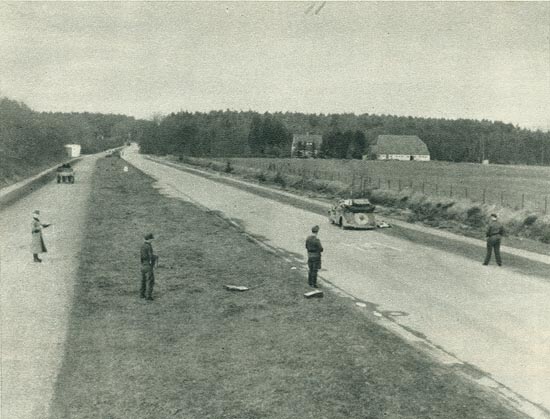 Reconstruction by the SD, picture taken by the Apeldoorn police photographer J. Muda Source: Ik draag u op (1946).
Reconstruction by the SD, picture taken by the Apeldoorn police photographer J. Muda Source: Ik draag u op (1946).Information
- Article by:
- René ten Dam
- Translated by:
- Chrit Houben
- Feedback?
- Send it!
Related sights
Related books
Sources
- BERENDS, H., Woeste Hoeve: 8 maart 1945, Kok Voorhoeve, Kampen, 1995.
- JONG, L. DE, Het Koninkrijk der Nederlanden in de Tweede Wereldoorlog, Martinus Nijhoff, Amsterdam, 1981.
- N.N., Ik draag u op, Wegener, Apeldoorn, 1982.
- OVERWATER, A.M., De gevallenen in de forten van Utrecht - 1942-1945, Eigen beheer, Barendrecht, 1997.
- Slachtofferregister Oorlogsgravenstichting
- "300 Nederlanders Vermoord" in: Het Parool, 17 maart 1945 op Het Illegale Parool
- "Wie pleegde aanslag Rauter" in: Het Parool, 27 maart 1945 op Het Illegale Parool
